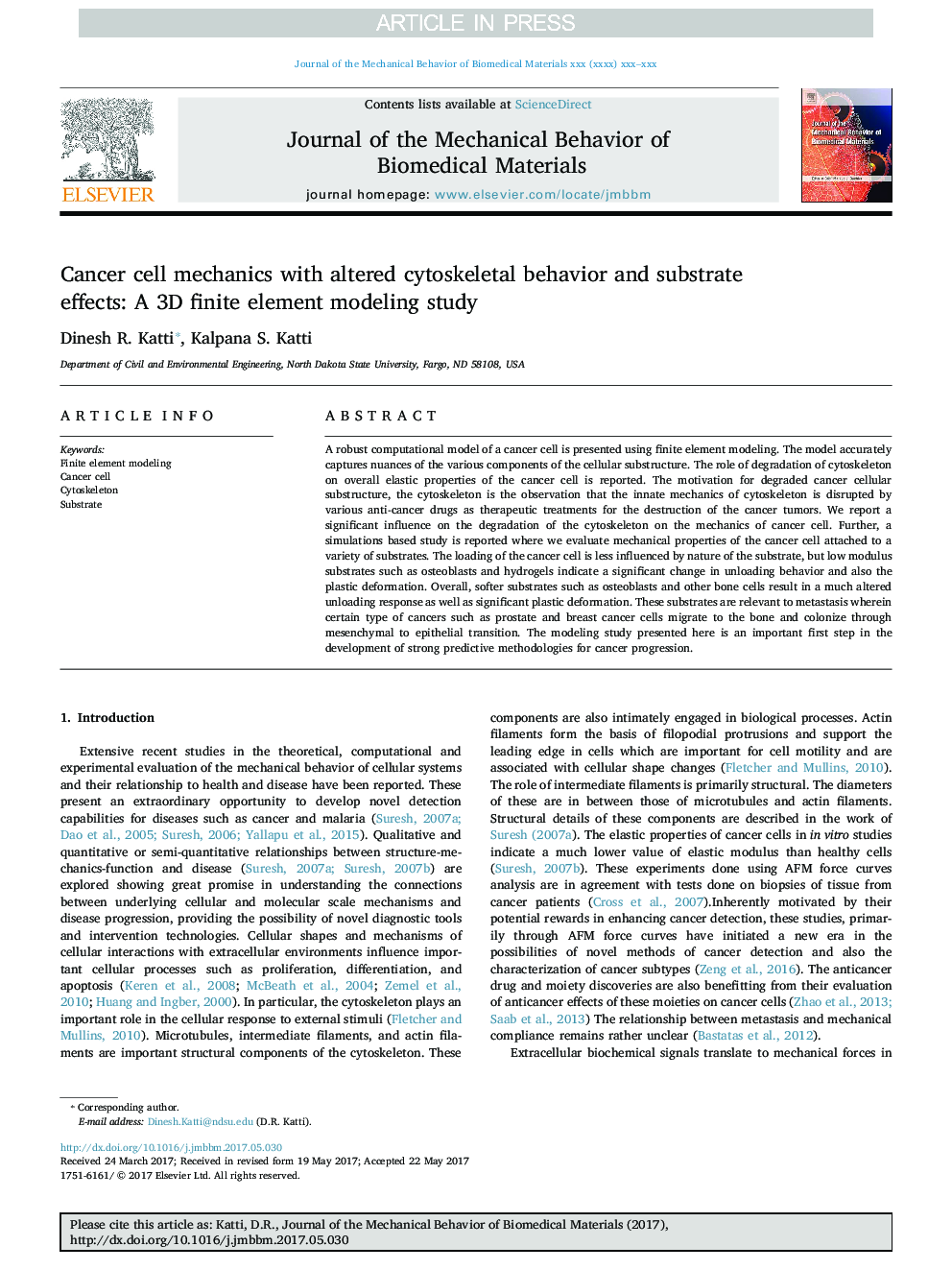| Article ID | Journal | Published Year | Pages | File Type |
|---|---|---|---|---|
| 7207447 | Journal of the Mechanical Behavior of Biomedical Materials | 2017 | 10 Pages |
Abstract
A robust computational model of a cancer cell is presented using finite element modeling. The model accurately captures nuances of the various components of the cellular substructure. The role of degradation of cytoskeleton on overall elastic properties of the cancer cell is reported. The motivation for degraded cancer cellular substructure, the cytoskeleton is the observation that the innate mechanics of cytoskeleton is disrupted by various anti-cancer drugs as therapeutic treatments for the destruction of the cancer tumors. We report a significant influence on the degradation of the cytoskeleton on the mechanics of cancer cell. Further, a simulations based study is reported where we evaluate mechanical properties of the cancer cell attached to a variety of substrates. The loading of the cancer cell is less influenced by nature of the substrate, but low modulus substrates such as osteoblasts and hydrogels indicate a significant change in unloading behavior and also the plastic deformation. Overall, softer substrates such as osteoblasts and other bone cells result in a much altered unloading response as well as significant plastic deformation. These substrates are relevant to metastasis wherein certain type of cancers such as prostate and breast cancer cells migrate to the bone and colonize through mesenchymal to epithelial transition. The modeling study presented here is an important first step in the development of strong predictive methodologies for cancer progression.
Related Topics
Physical Sciences and Engineering
Engineering
Biomedical Engineering
Authors
Dinesh R. Katti, Kalpana S. Katti,
